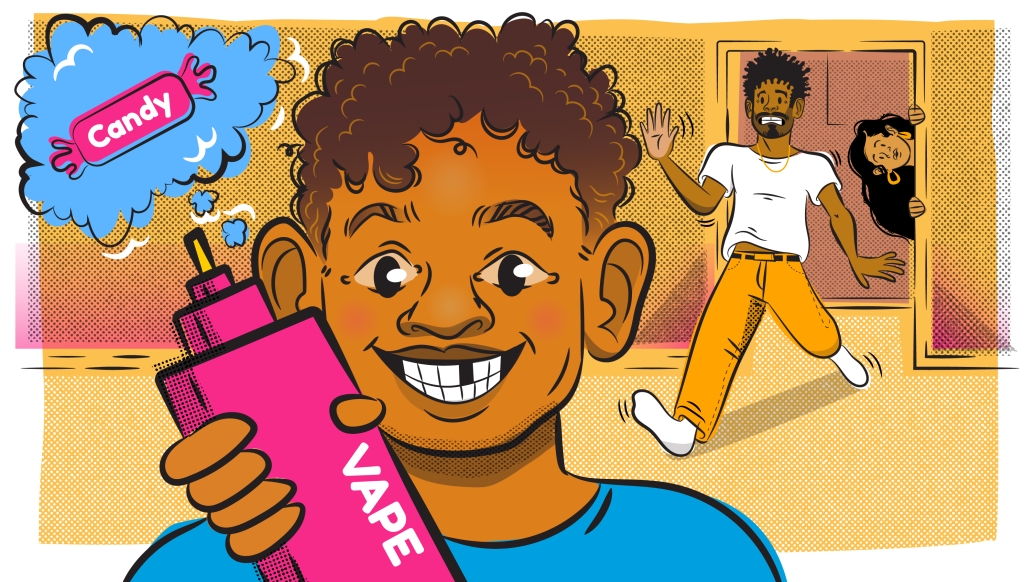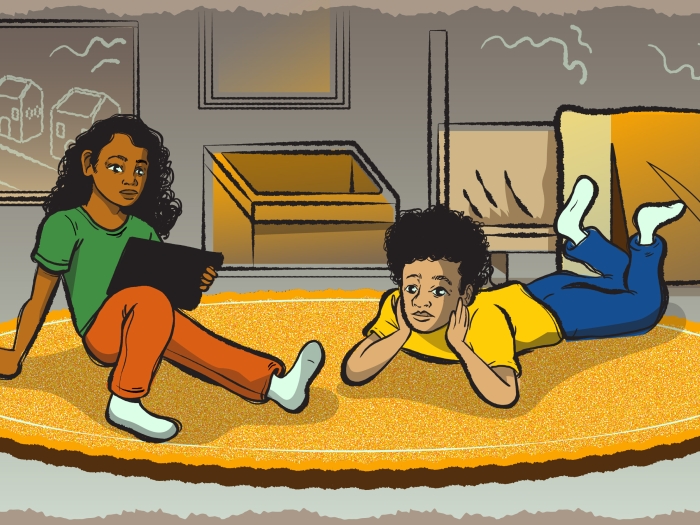Pediatrician: Just a few drops of liquid nicotine can be lethal in a toddler
5:00 AM
Author |

As the popularity of e-cigarettes continues to grow, so too does the risk of accidental ingestion by toddlers and young children.
And national data suggests exposure to vaping, or e-liquids, reported to U.S. poison centers hit an all-time high in 2022, particularly in children under age five.
“Healthcare providers are sounding the alarm because emergency rooms and hospitals are seeing more and more nicotine ingestion and poisoning in children,” said Kristen Goncalves, M.D., pediatrician at University of Michigan Health C.S. Mott Children’s Hospital.
“While some symptoms may be mild, this type of nicotine exposure can be dangerous and even deadly for young kids.”
Goncalves shares the top six things she wants parents to know about the risks and harms of e-cigarettes for children:
“We’re definitely seeing an upward trend of ingestion or oral exposure to liquid nicotine among young children who we know are particularly vulnerable to associated health risks.” Kristen Goncalves, M.D.
Just a few drops of liquid nicotine can be lethal in toddlers
Children who have been exposed to e-cigarettes may experience a range of symptoms from mild to severe, Goncalves says.
Moderate symptoms may include nausea and vomiting and possibly pale, clammy skin. But other children may have balance issues, breathing changes, seizures and abnormal heart rhythms associated with an increased risk of sudden cardiac arrest or death.
Because of their small bodies and developmental stage, toddlers are among the highest risk groups.
“Curious toddlers are at an age when they’re exploring the world, which includes putting things in their mouth,” Goncalves said.
“Vaping devices can contain one or two milliliters of a nicotine solution – and in an average sized toddler, about 1/6 of a milliliter, or just a few drops, could be lethal.”
Liquid nicotine poisoning is on the rise
E-cigarette associated cases reported to U.S. poison centers have gone up and down over the last decade, but the Centers for Disease Control and Prevention reports a more than 30% increase between spring 2022 and 2023. Among all exposures, 6,074 (or nearly 88%) occurred among pre-kindergarten aged children.
This coincides with a spike in e-cigarette brands in the U.S. – from 184 in early 2020 to more than 260 by late 2022 – and the growing popularity of disposable e-cigarettes, which now make up more than half of vaping sales, according to the CDC.
Elf Bar, a disposable e-cigarette available in a variety of flavors, was reported in poisoning cases more often than all the other reported brands, the CDC reports, with more than 90% of exposures involving children younger than five.
“We’re definitely seeing an upward trend of ingestion or oral exposure to liquid nicotine among young children who we know are particularly vulnerable to associated health risks,” Goncalves said.
“Our data on exposure cases relies on voluntary reporting so the number of cases is also likely underreported,” she added.
Made for adults but appealing to kids
Despite legislative efforts to limit fruit and candy flavors that may make e-cigarettes alluring to children, tweens and teens, many companies have found loopholes.
Some disposable e-cigarette brands still come in packaging and flavors that make them attractive to young children, Goncalves said.
“Vapes come in colors like pastel pink and some packages have cartoon-like imagery on them,” Goncalves said. “Even the devices can be shaped like things you would mistake as something you eat or drink like a soda can.
“Some of these solutions also come in flavors that are tempting to children, like bubblegum or cotton candy. All these factors combined really make these products potentially appealing for a child to play with and even try tasting, which is really scary knowing that it can be toxic for them.”
Store vapes properly in homes with kids
Ideally, it’s best not to have any vapes in a home with young children, Goncalves says.
But if there are vapes, parents should make sure they’re securely stored out of reach. Safety steps include using a lockable container or child proof locks, choosing high and hidden places that are difficult for children to access, removing batteries if possible, locking up e-liquids and pods separately from vapes and disposing of unused devices.
“When children are little, it’s essential that parents keep these devices out of sight and out of reach to prevent accidental exposure and ensure safety,” Goncalves said. “As children get older, parents can begin having open and honest conversations about the potential health consequences and addiction risks associated with vaping.”
Watch for signs children need urgent medical attention
Some brief exposures, such as accidentally chewing a piece of nicotine gum or having a nicotine patch on the skin for a few minutes, may be managed initially by calling poison control, Goncalves said.
But parents should always err on the side of caution. If a child is vomiting, has an increased heart rate, excessive sweating or drooling, tremors, paleness or difficulty breathing, families should seek immediate medical attention.
“If a child accidentally ingests any nicotine solutions, they should be evaluated urgently in the emergency room,” Goncalves said.
Legislative efforts aren’t consistent
Laws regulating the use of electronic cigarettes vary across the U.S., with many limits on marketing and advertising intended to make products less appealing to youth and kids.
Some states, including Michigan, have passed laws attempting to ban flavored vapes but restrictions and enforcement vary, and change based on the specific type of e-cigarette and location. And while vaping products are required to come in child proof packaging, the definition of child proof also appears to vary, which is why parents should take extra safety steps on their own, Goncalves says.
“Specific measures to protect children and youth from e-cigarette risks differ across the country but despite these efforts, exposure still happens and continues to be a public health concern,” Goncalves said.
“Families need to be vigilant and responsible about efforts to prevent liquid nicotine poisoning exposure among young children and kids. As a pediatrician, I hope to see the health community, e-cigarette manufacturers and marketers work on strategies to reduce the potential risks and appeal of e-cigarettes among young people.

Explore a variety of health care news & stories by visiting the Health Lab home page for more articles.

Department of Communication at Michigan Medicine
Want top health & research news weekly? Sign up for Health Lab’s newsletters today!





